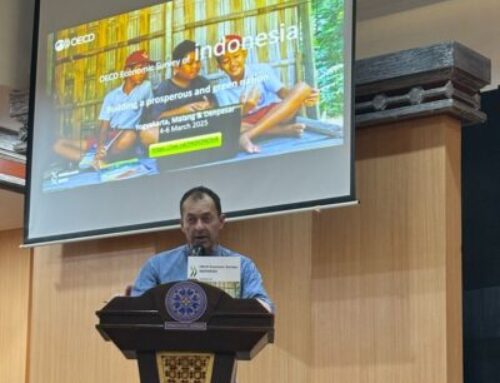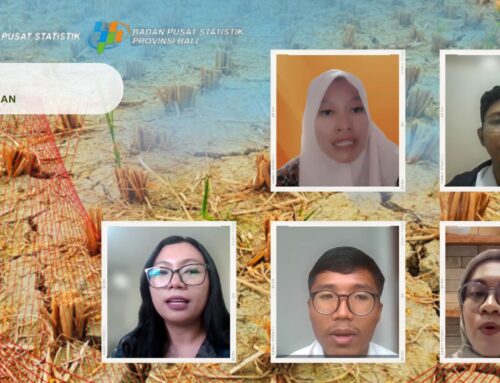FKP hosted by ANU Indonesia Project with Arianto Patunru (The Australian National University) and Wisnu Harto (TBWA). Thursday, 18 February 2021.
KEY POINTS:
- The COVID-19 virus can be transmitted to anyone without discrimination. However, the geographical spread depends on the region’s response to the pandemic and there are variations at sub-national levels. The study examined the interaction of disaster factors in estimating the economic risks of COVID-19. The factors are categorized using the HEVR approach: hazard, exposure, vulnerability, and resilience.
- The study found that the economic risks of the COVID-19 pandemic are not evenly distributed across Indonesia’s districts, and that those in Java suffer the most. This confirms the hypothesis that even though COVID-19 is not discriminating, the interaction with other components (exposure and vulnerability) makes the economic risks concentrated in Java.
SUMMARY
- The COVID-19 virus can be transmitted to anyone without discrimination. However, the geographic spread of the virus depends on the region’s responses and there are variations at sub-national levels. The study confirms that the economic risks of COVID-19 correlate strongly with the spread of the virus. The highest economic risks are in the western part of Indonesia, especially Java.
- The study follows the approach taken by Noy et al. (2020) in examining the interaction of disaster factors in estimating economic risks. The factors are categorized using the HEVR approach: hazard, exposure, vulnerability, and resilience.
- Hazard is defined as daily COVID-19 confirmed cases per 1000 people at the district level (data sourced from @KawalCOVID19).
- Exposure is defined as factors that are related to people’s mobility that expose them to the virus: population density, number of public areas, transportation networks, frequency of flights, internal migration data, etc (data sourced from PODES, open flight data, open street maps, etc).
- Vulnerability is defined as factors that may weaken the economic factors of the region: poverty rate, the share of elderly in the population, health care facilities, infant mortality, out of pocket health spending.
- Resilience is defined as factors that are strengthening the region against the potential economic risks: internet access, debt-to-GDP ratio, etc.
- Economic risk is the variable of interest in this study. To proxy the risk, the study uses disability-adjusted life years (DALY) which is the sum of years lost due to ill-health, disability, or death from communicable diseases. To get closer to economic risk, DALY is converted from province level to district level using GDP share as the weight.
- There are three regression approaches in this study to see the correlation between economic risk (DALY) and disaster factors (HEVR). The first is simple regression between DALY and the HEVR. The second is assuming equal hazard across districts (all are equally susceptible to COVID-19) to see what happens if the virus is equally distributed. Third, the economic risk is recalculated using weights implied by the coefficients from the first regression, to normalize each coefficient so that a clearer components’ contribution to the risk can be estimated.
- In the first simple regression model (only the correlation between DALY and HEVR), the result shows that there is no significant difference in economic risks between regions in Indonesia, but Java already indicated higher risk concentration as depicted in the image below where the lightest color represent lower economic risk and the darkest color represent higher economic risk.
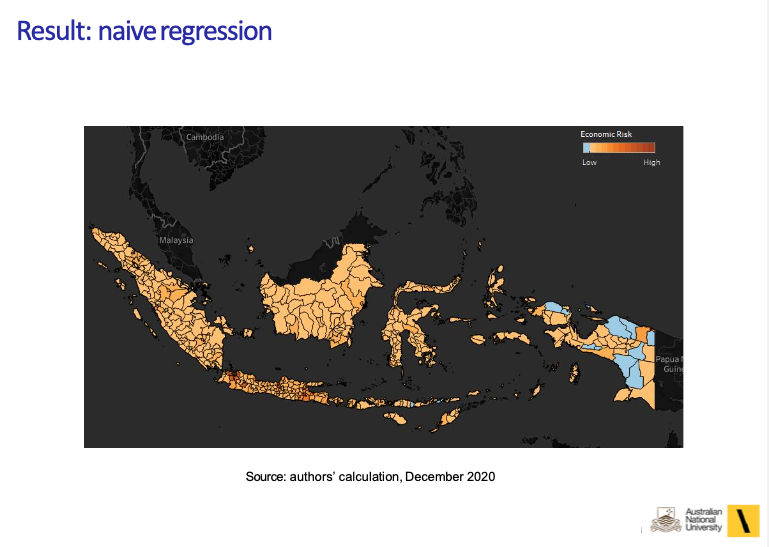
- However, after the hazard factor is equalized across districts, the general economic risk is lower than the first model, but then the risk is more concentrated in Java, as shown in the figure below where Java has the most deep red color. This has a lot to do with the exposure and vulnerability as Java is the most populous island in the country.
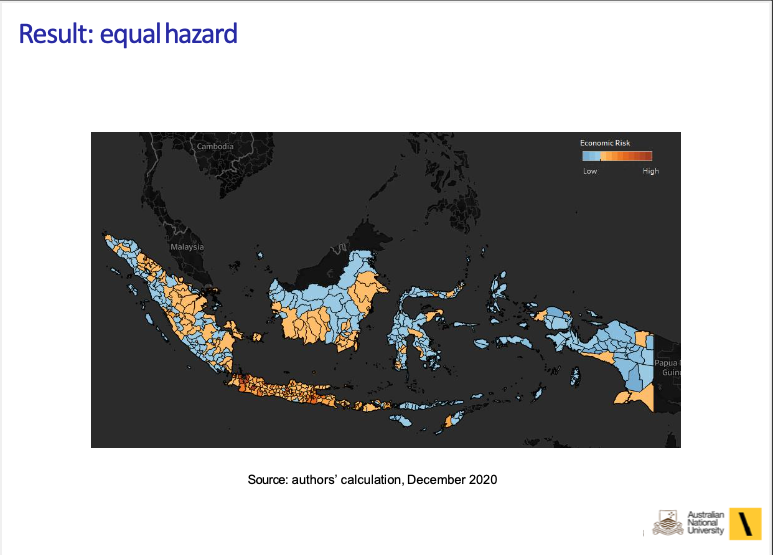
- For the third model, the result is closer to the first model. However, the concentration of the risk concentration in Java is higher. This confirms the hypothesis that even though COVID-19 is not discriminating, the interaction with other components (exposure and vulnerability) makes the economic risks concentrated in Java as shown in the figure below where Java again has the most concentrated deep red color.
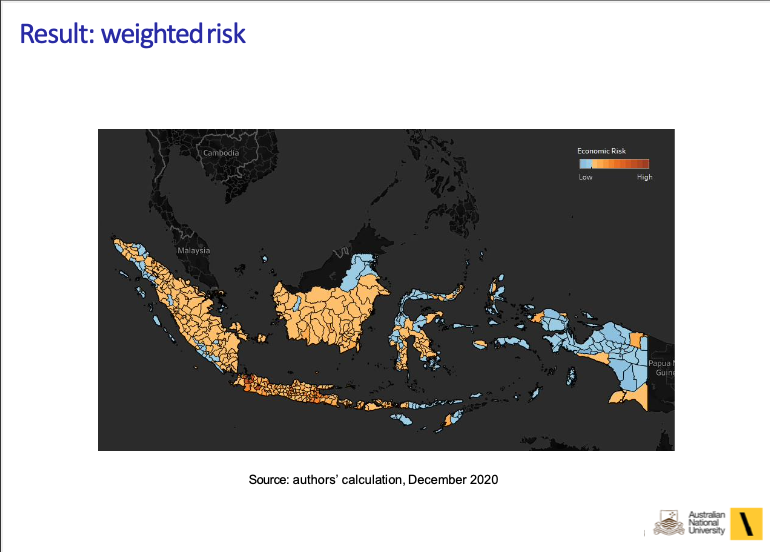
- In conclusion, the economic risks of the COVID-19 pandemic are not evenly distributed across Indonesia districts, and those in Java suffer the most. It is still possible to employ many more different data sources to monitor the changes in economic risks associated with the pandemic. This research also has not yet taken into account health protocols and fiscal stimulus as determinants of the risks. The writers plan to build a dashboard for this database on the Indonesia Project COVID website.



